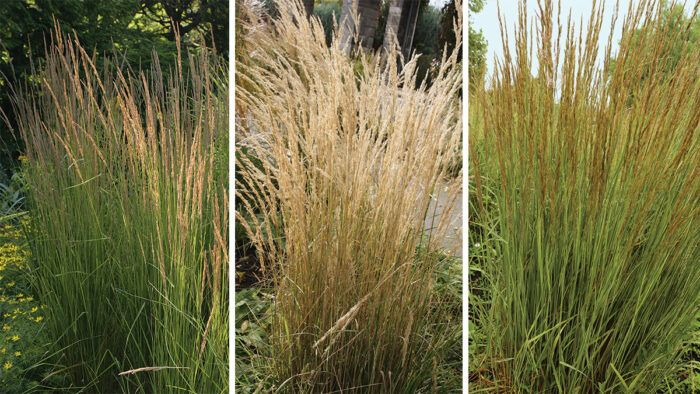
As native grasses such as little bluestem (Schizachyrium scoparium and cvs., Zones 3–9) and prairie dropseed (Sporobolus heterolepis and cvs., Zones 3–9) increasingly gain traction in gardens, exotics such as miscanthus (Miscanthus sinensis and cvs., Zones 4–9) are losing favor because of their invasive tendencies. But not all exotic grasses are troublesome and need to be avoided. Feather reed grass (Calamagrostis × acutiflora and cvs., Zones 5–9) is a natural hybrid of C. arundinacea and C. epigejos, which are both nonnatives and prolific self-sowers, but the hybrid rarely sets fertile seed—a major plus for an exotic grass, right? So why are other reed grasses—‘Karl Foerster’ aside—so underused? To answer that question is to understand the phenomenon of ‘Karl Foerster’ feather reed grass (C. × acutiflora ‘Karl Foerster’). See more plant trial results here.
More on ornamental grasses
Fine Gardening podcast Episode 96: Favorite Ornamental Grasses
Caring for Ornamental Grasses in the Fall
At a Glance: Calamagrostis spp. and cvs.
| Zones: 4–9
Native range: Asia, Europe, Russia Conditions: Full sun to light shade; moist, well-drained soil Pests and diseases: Foliar rust can be an occasional problem, but reed grasses are otherwise trouble-free. |
Propagation: Division
Watch out: Korean feather reed grass can self-sow; reports vary from minimally to aggressively so. As with any exotic species, keep a lookout for seedlings, especially in moist, shady locations and along waterways. |
The backstory of the most popular reed grass
Renowned German nurseryman Karl Foerster discovered this selection in a botanic garden in the 1930s—originally calling it ‘Stricta’—and introduced it in Germany in 1950. The cultivar, later renamed to honor him, reached the U.S. market in the 1960s, although I’m not certain which happened first. The popularity of ‘Karl Foerster’ was helped along by being one of the signature plants of the New American Garden—an exuberant meadowlike style created by Wolfgang Oehme and James van Sweden in the 1970s that mixes swaths of grasses and perennials to emulate native American landscapes. Gardeners and landscapers alike recognized its garden value and planted it with zeal.
I cannot remember if I voted for ‘Karl Foerster’ feather reed grass for Perennial Plant of the Year in 2001, but I think that everyone who did got it right. The narrow, vertical habit remains neat all season, although by midsummer the slender bright green leaves arch fountainlike under the upright floral stalks. Golden seed heads are its most recognizable trait—the flower stalks make up about two-thirds of the nearly 6-foot height—but the flowers start out silvery purple and feathery before constricting into the slender plumes. The progression of colors on ‘Karl Foerster’ flowerheads may be subtle, but if you look for it you’ll see the transition from purple-pink to deep maroon to bronze to golden tan and finally to straw as fall comes on. Seed heads shatter early, but the stems persist sentinel-like through winter. Whether you pronounce it “furster,” “forster,” or “forester” (the latter two are irrationally like foghorn blasts in my ears), ‘Karl Foerster’ is a reliable, first-rate ornamental grass deserving of its renown. Keep your eyes out for a dwarf version that’s coming to the market soon.
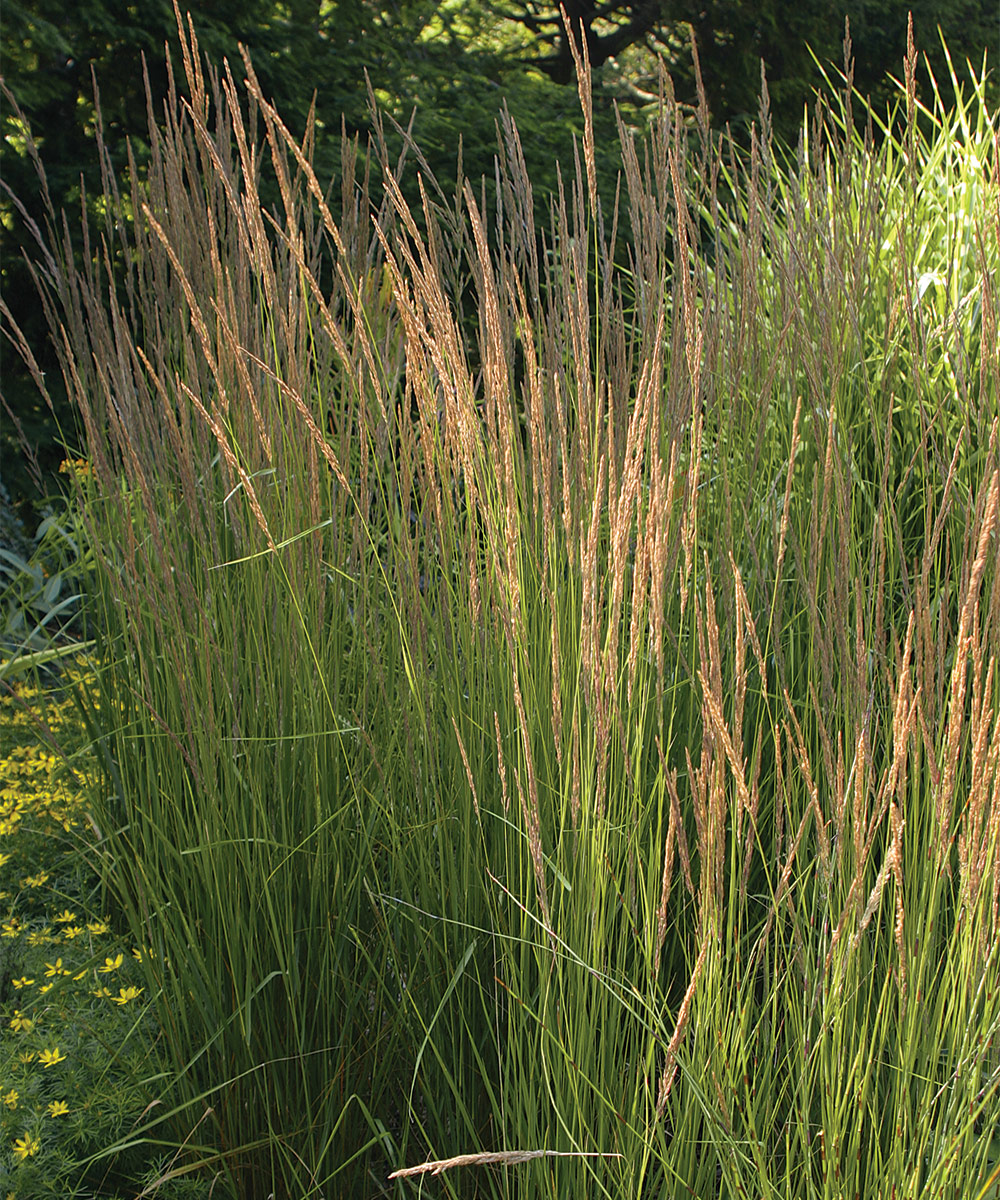
‘Karl Foerster’ is the best known and most grown of the reed grasses, to the near exclusion of all the others. While ubiquity is not usually a positive aspect, it is understandable how it happened in this case. ‘Karl Foerster’ possesses the right attributes that make it a choice landscape plant—strong habit, long-lasting floral/fruit display, and winter interest. For me, its overexposure in landscapes is more troubling in the mundane ways it is often used. Honestly, a stark line of this columnar grass, never touching like the pickets in a fence, feels soulless after the thousandth encounter. I think ‘Karl Foerster’ (or any of the related cultivars) is better grouped in small to large masses or paired with blowsier perennials or bushy shrubs to counterbalance their stiffness. And spirited by the wind, even rigid grasses come alive as they swish and sway in the breeze.
By 2018 I had seen ‘Karl Foerster’ innumerable times in countless landscapes but felt pretty clueless about the other reed grasses. I thought that a closer look at the cultivars might entice gardeners to see beyond ‘Karl Foerster’.
Trial ParametersSince 2018, the Chicago Botanic Garden has evaluated 11 reed grasses in comparative trials. Two of the selections are too new to comment on yet. Besides observing ornamental traits, we monitored the plants to see how well they grew and adapted to environmental and soil conditions while keeping a close eye on any disease or pest problems and assessing plant injuries or losses over winter.
|
Other reed grasses worthy of a second look
‘Eldorado’ feather reed grass

‘Eldorado’ feather reed grass (C. × acutiflora ‘Eldorado’) has the same vertical habit as ‘Karl Foerster’, but its green leaves feature pronounced golden stripes down the middle of each blade. There are times in the early spring when some stripes appear white, but this is a short-lived trait. In a nice nod to color echoes, the gold-and-green leaves complement the honey-yellow flower culms as they rise out of the bushy mounds in late spring. The pale purple flowers, which retain some color as they constrict, beautifully accentuate the yellow stems for a short time. Flowers age to a light wheat color by fall. While ‘Karl Foerster’ is certainly the most robust of the cultivars, ‘Eldorado’ comes close. On its own, the strong profile of ‘Eldorado’ makes it a perfect accent or exclamation point in the garden, but massing it (or any of the variegated selections) amplifies the colorful foliage.
‘Avalanche’ feather reed grass
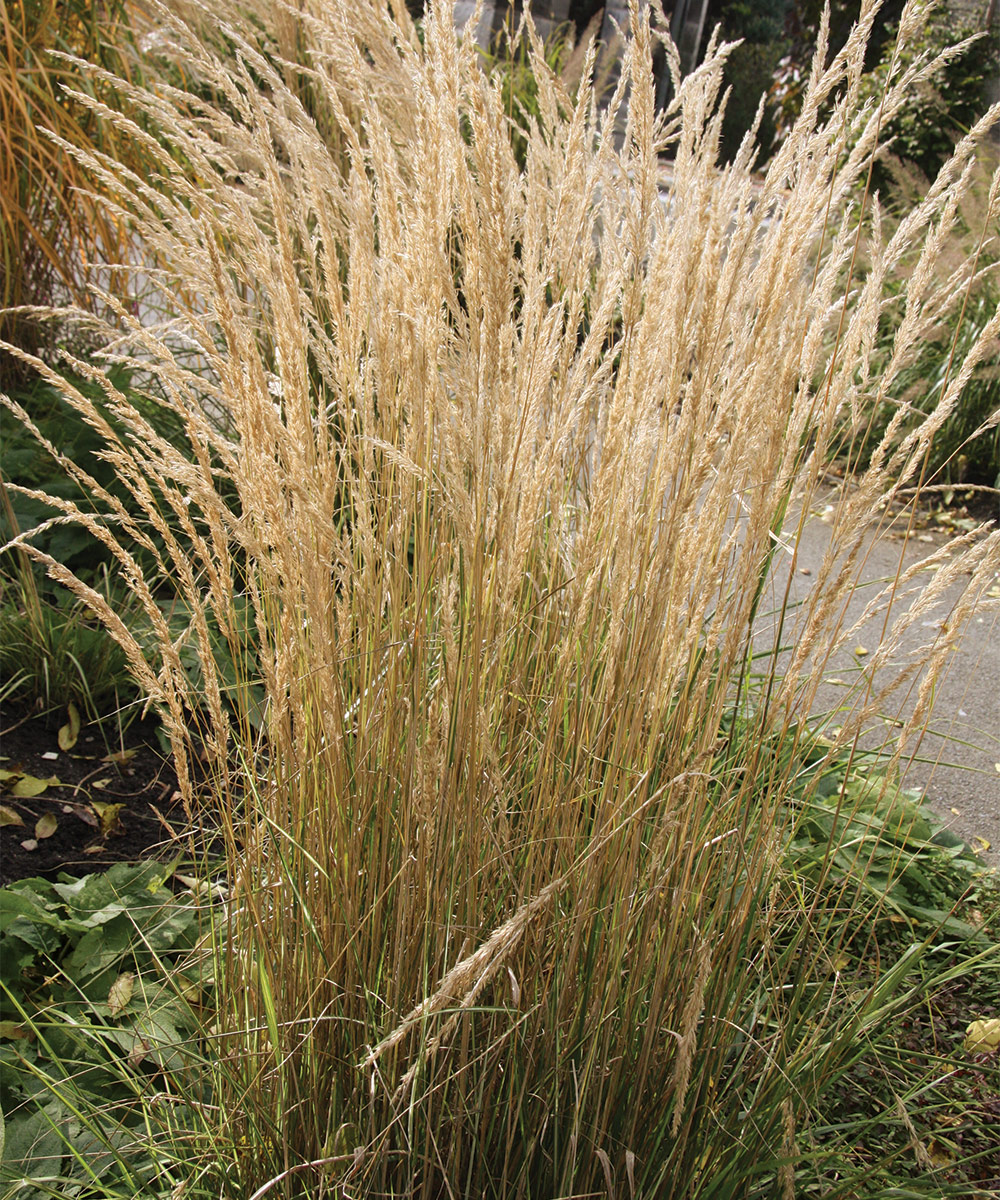
Matching music to a plant name keeps things interesting for me, so I hummed Shawn Colvin’s “Shotgun Down the Avalanche” whenever I evaluated ‘Avalanche’ feather reed grass (C. × acutiflora ‘Avalanche’). A reverse variegation of ‘Overdam’ (C. × acutiflora ‘Overdam’), ‘Avalanche’ features white stripes down the middle of its dark green blades, adding a little sparkle that ‘Karl Foerster’ doesn’t have. In spring, lush verdant tufts of arching, vibrantly striped leaves are the show before flowering stems steal the focus away. I love the silvery confection of the fresh inflorescences in bud paired with the white-lined foliage, but the light purple flowers that follow are a nice counterpoint to the crisp variegation. After the flowerheads constrict, there’s a minute of golden gloriousness before they settle to light oatmeal with coppery overtones for the rest of the summer. ‘Avalanche’ is shorter than ‘Karl Foerster’—in fact, it’s the shortest of the cultivars by a few inches—and has a narrower profile too.
‘Hello Spring’ feather reed grass
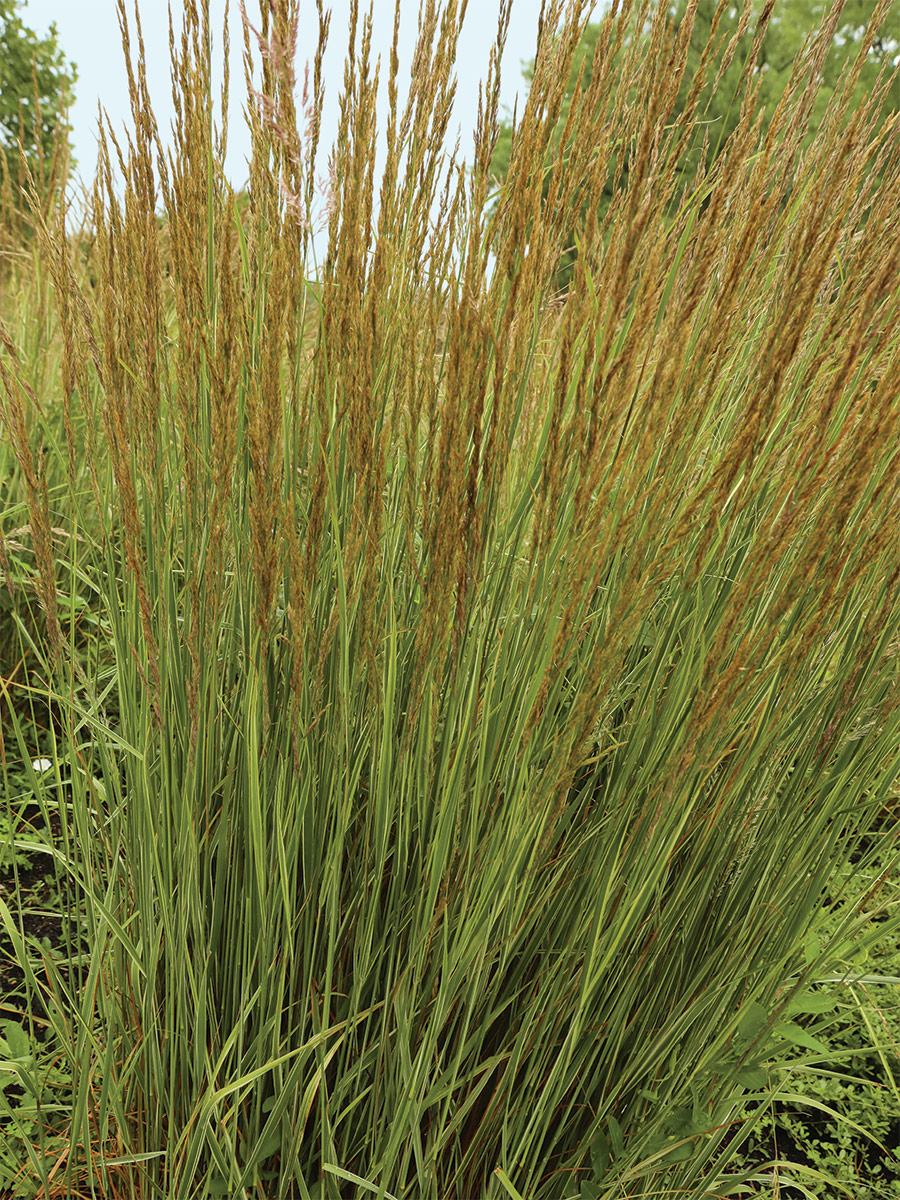
My first impression of ‘Hello Spring’ feather reed grass (C. × acutiflora ‘Hello Spring’) was “Hello, ‘Overdam’!” The similarity is clear, but ‘Hello Spring’ bulked up faster and proved to be the more vigorous plant. The leaves—which feature wide, creamy white margins bordering dark green, longitudinal center lines—are most vibrantly colorful in the early season. The color is less conspicuous as summer progresses (ditto for the other variegated cultivars), but in all fairness, who’s looking down at the leaves once the floral show is in full swing? The pink-over-cream plumes opened consistently on the first day of summer and put on a nice show for a couple of weeks before constricting their profiles. Bronze-tan seed heads and culms eventually fade to straw yellow in autumn before shattering in late fall.
Korean reed grass (C. brachytricha, Zones 4–9) was included in our trials and is an easy plant to like when it blooms. Due to its potential invasiveness, however, the Chicago Botanic Garden has put it on the removal list. It’s unfortunate when you must banish a plant, but with so many other great reed grasses to choose from, the sting from the loss of Korean reed grass won’t last long.
Knockout newbies to keep on your radar
‘Cheju-do’ reed grass
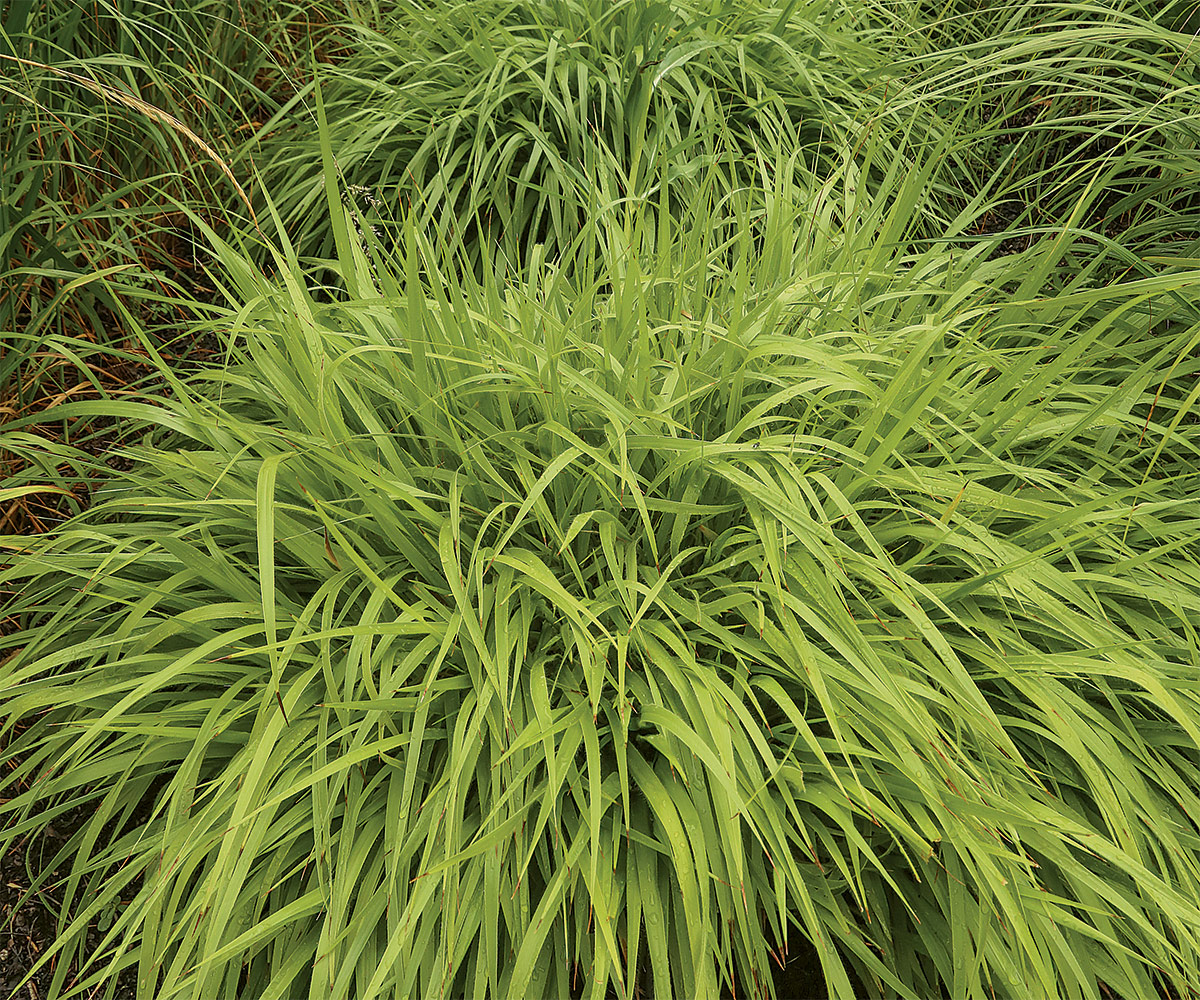
I knew nothing about ‘Cheju-do’ reed grass (C. ‘Cheju-do’, Zones 5–8) when I bought it except that some descriptions likened it to a dwarf ‘Karl Foerster’. I still don’t know its parentage, but now that I’ve grown it, that depiction seems a stretch to me. It’s like saying a dachshund is a small version of a greyhound. The shorter, mounded habit of ‘Cheju-do’ is a pleasing departure from the upright forms. Soft silvery hairs on the light green blades sparkle on sunny days and on dewy mornings. Short pink-and-green plumes are 6 inches long and 1 inch wide (they constrict to ¼ inch wide) and are not as fluffy as those of Korean feather reed grass. They open in midsummer and ripen golden tan on russet-toned culms in fall. The leaves take on bronze hues in fall too. I do wonder if ‘Cheju-do’ would have gotten as much visitor attention if it hadn’t been sitting among the taller reed grasses, where the obvious differences between them sparked curiosity.
‘Lightning Strike’ feather reed grass
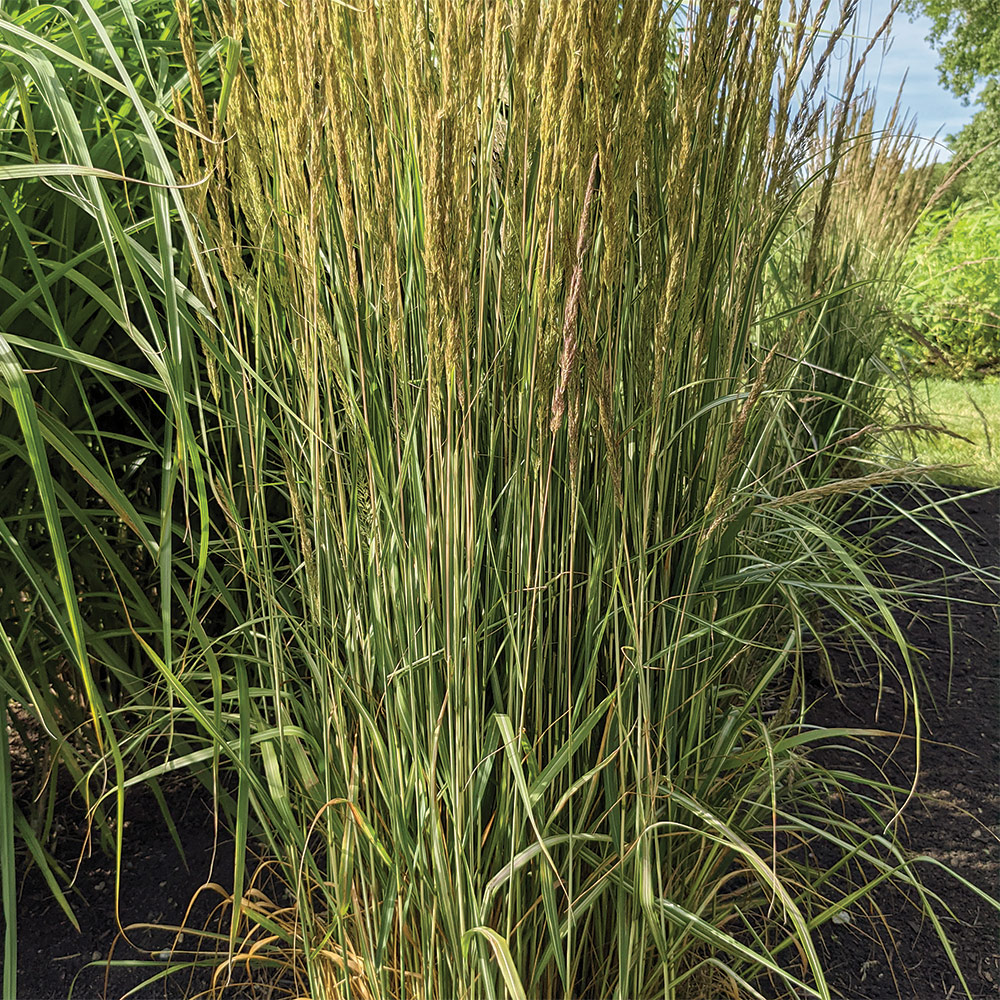
It is probably not a surprise that ‘Lightning Strike’ feather reed grass (C. × acutiflora ‘Lightning Strike’) sports wide, creamy white stripes running down the centers of dark green leaves. What is unexpected is the chartreuse to light-gold striping on the fresh spring foliage. (These colors fade away with warmer days.) Yellow culms hold high the feathery purple flowers in early summer. A bit later the constricted seed heads turn a distinctive bronze-orange on golden culms before everything fades to tan. ‘Lightning Strike’ is comparable to ‘Avalanche’ in leaf color but is the larger of the two, and its seed heads are a richer color. Habit quality was compromised by a burly neighboring grass that did its best to overshadow ‘Lightning Strike’ late in the trial. On a positive note, the crowding proves that feather reed grass prefers full sun to be its best.
How to grow reed grasses
Many ornamental grass species not only add beautiful forms and textures to the garden but also serve as ecological powerhouses. Reed grasses require moderate moisture once established. They improve water infiltration into the soil by slowing down and absorbing runoff. They also set down fibrous roots that prevent erosion by holding the soil in place. These remarkable perennials give a lot and ask for very little in return.
Location
Reed grasses grow best in moist, well-drained soil but are adaptable to heavy clay soil. Full sun to light shade is preferred, although fewer flowers and runty or floppy habits may occur in too much shade. Korean feather reed grass is native to deciduous woods and so can be grown well in light to medium shade. Afternoon shade is recommended in hot southern climates for all varieties.
Planting
The best time to plant is in fall, but early spring usually works as well. Plants can sometimes be root-bound in nursery pots, so be sure to loosen the roots when putting your plant into the planting hole.
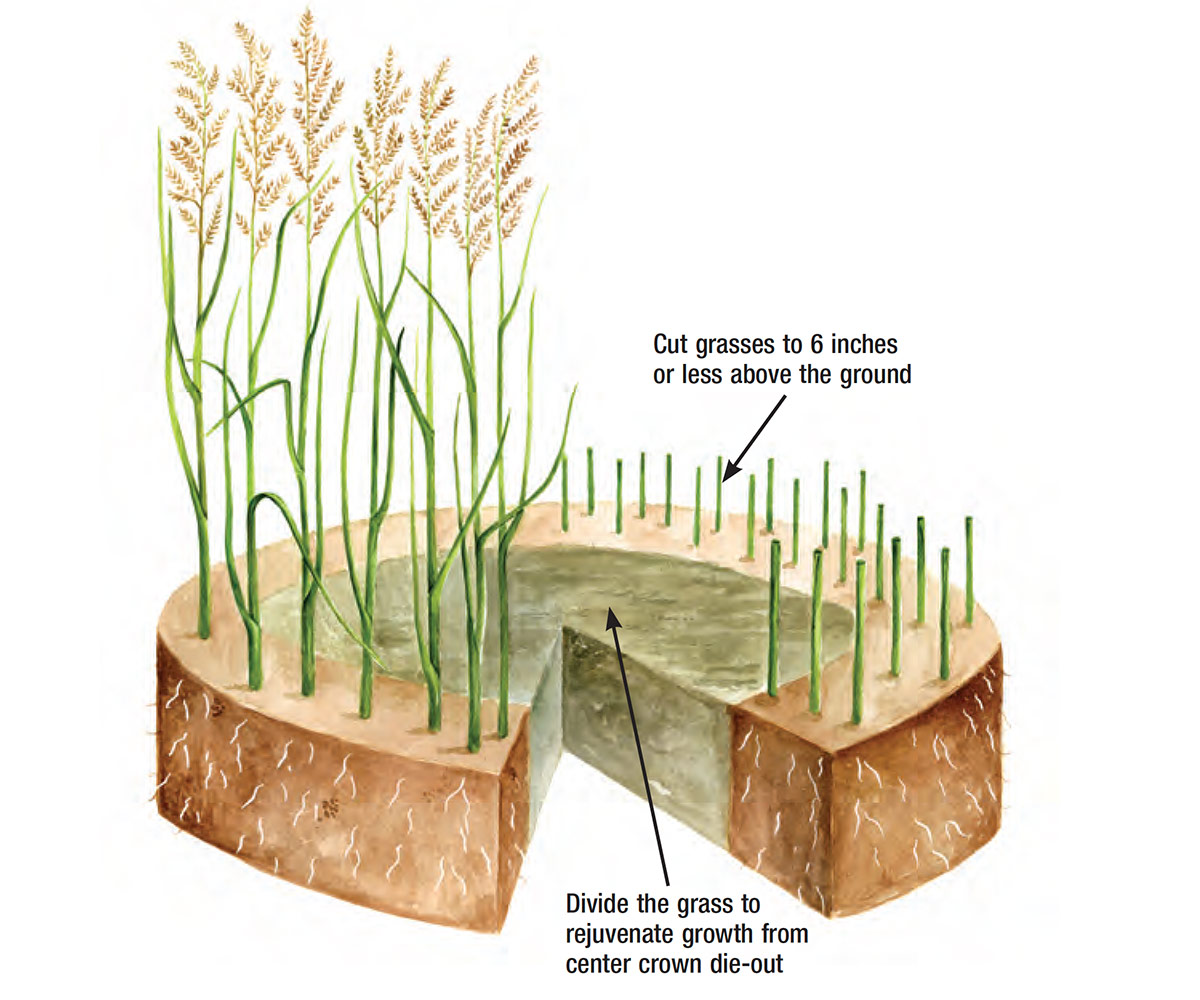
Pruning
Cool-season grasses, such as Calamagrostis species and cultivars, push new growth in early spring, so old clumps should be cut down once a year by late winter. Although ‘Cheju-do’ and Korean feather reed grass green up a bit later than other reed grasses, cut them down at the same time as the others.
Dividing
Divide clumps in fall or spring as needed to rejuvenate clumps and to propagate.
Using grasses in the border and beyond
Most reed grasses have the signature upright form and tight habit characteristic of ‘Karl Foerster’. This habit lends itself to several design approaches in gardens big and small.
Massing and screening
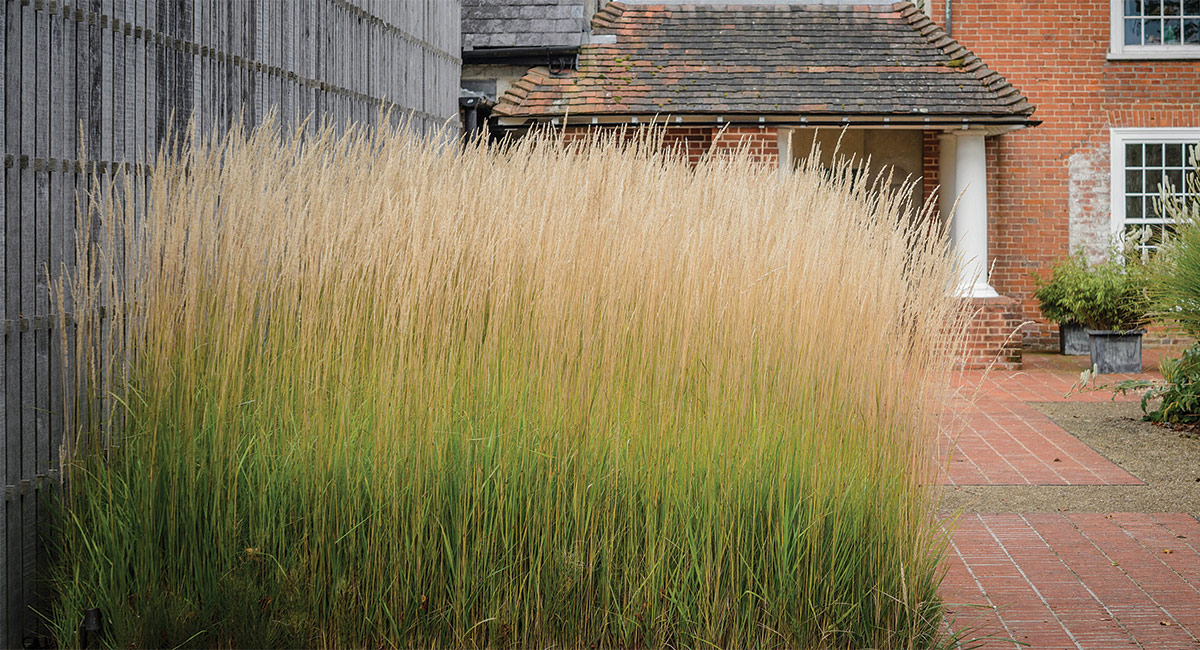
When planted tightly, feather reed grass makes an excellent screen for ensuring seasonal privacy, creating a sense of mystery, or obscuring an unsightly view. When massed, this grass is also stunning as a backdrop for other plants.
Punctuating

Need a little height or oomph? The tall and upright structure of feather reed grass is just the ticket. It makes a great focal point or staunch yet airy companion in containers and border vignettes with other perennials.
Weaving
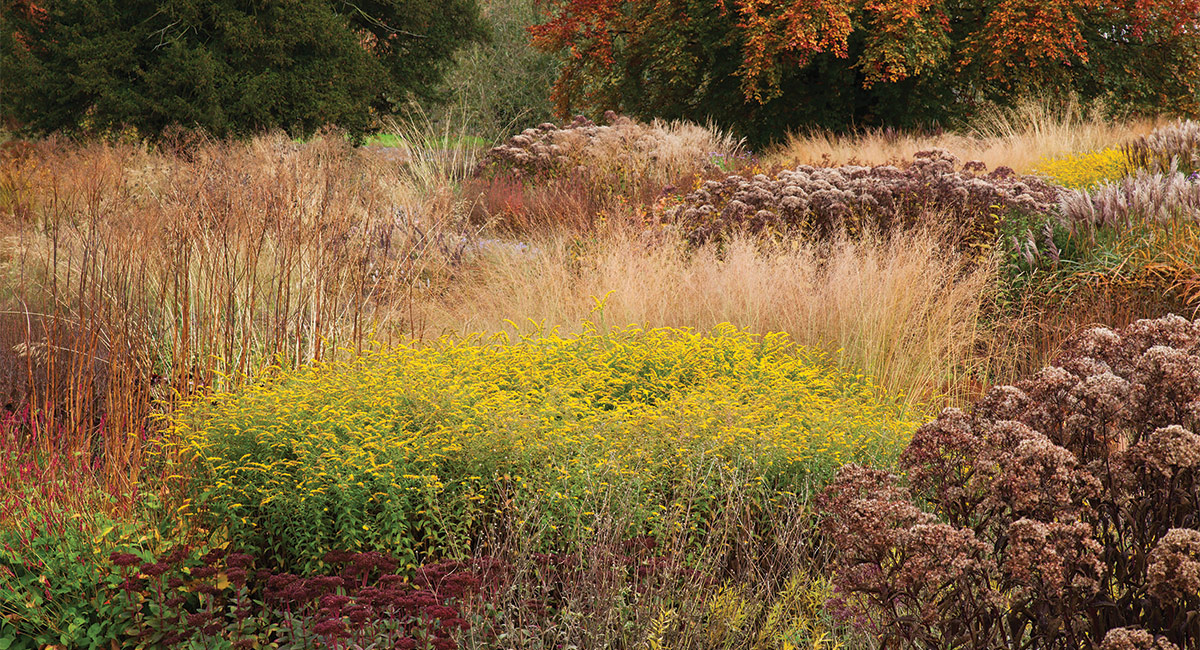
Repeated sweeps of reed grass across a landscape create wonderful textural drama. Weaving this unifying plant throughout the garden also helps to tie numerous planting areas together.
Richard Hawke is an expert plantsman and the director of ornamental plant research at the Chicago Botanic Garden in Glencoe, Illinois.
Photos, except where noted: Danielle Sherry
Sources
- Digging Dog Nursery, Albion, CA; 707-937-1130; diggingdog.com
- Great Garden Plants, Grand Haven, MI; 877-447-4769; greatgardenplants.com
- Nature Hills Nursery, Omaha, NE; 402-934-8116; naturehills.com
Fine Gardening Recommended Products

Fiskars 28" Power-Lever Garden Bypass Lopper and Tree Trimmer
Fine Gardening receives a commission for items purchased through links on this site, including Amazon Associates and other affiliate advertising programs.

isYoung Birdlook® Smart Bird Feeder with Camera
Fine Gardening receives a commission for items purchased through links on this site, including Amazon Associates and other affiliate advertising programs.

Gardena 3103 Combisystem 12-Inch To 20-Inch Adjustable Metal Fan Rake Head
Fine Gardening receives a commission for items purchased through links on this site, including Amazon Associates and other affiliate advertising programs.


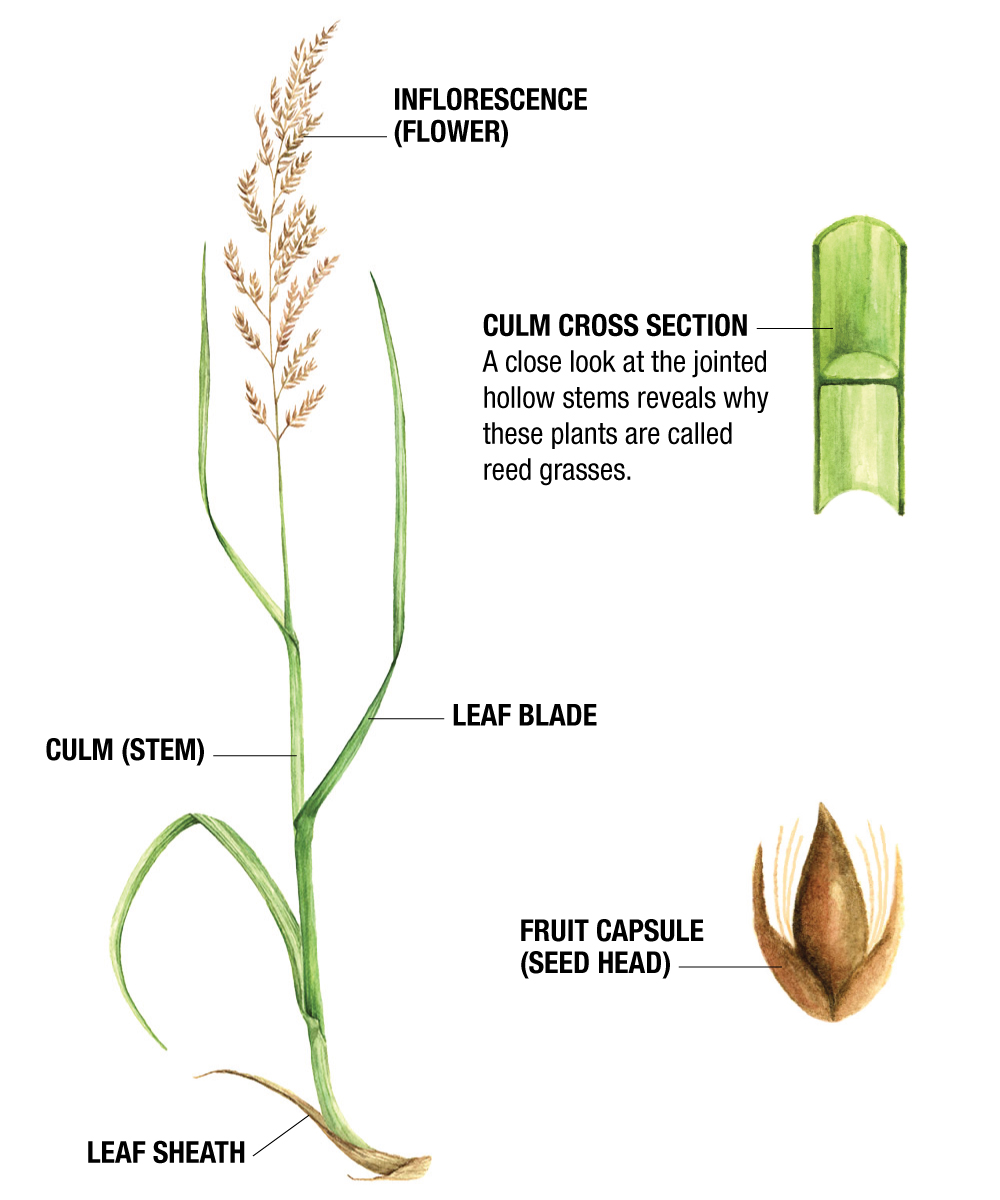
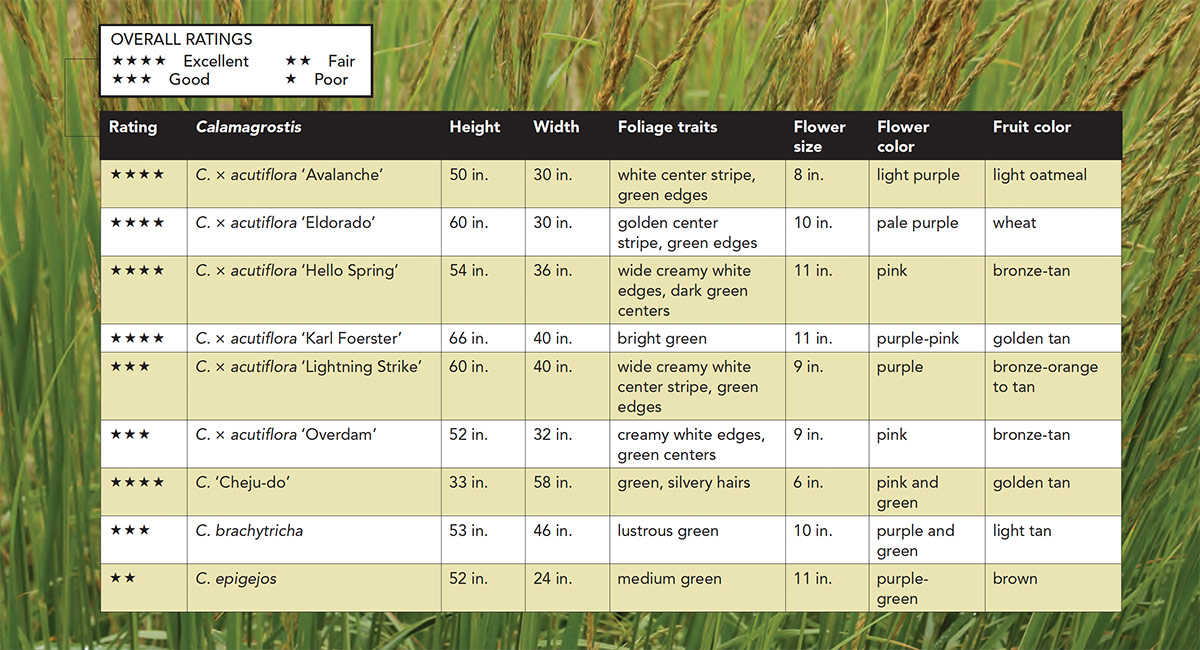
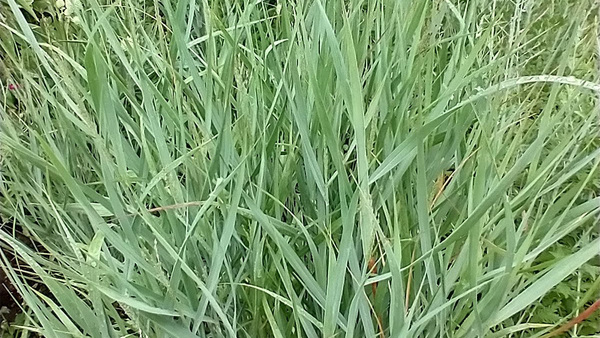


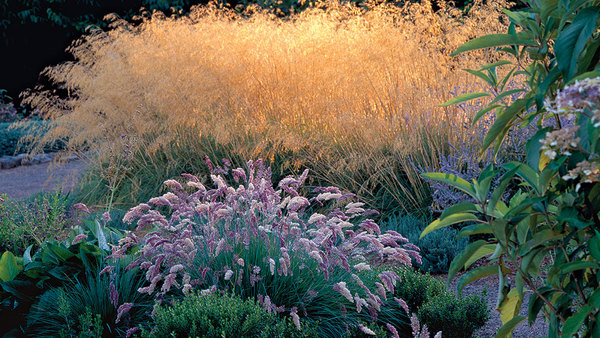

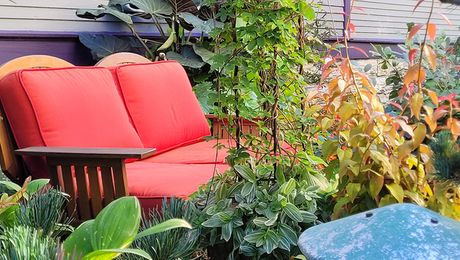











Comments
Log in or create an account to post a comment.
Sign up Log in